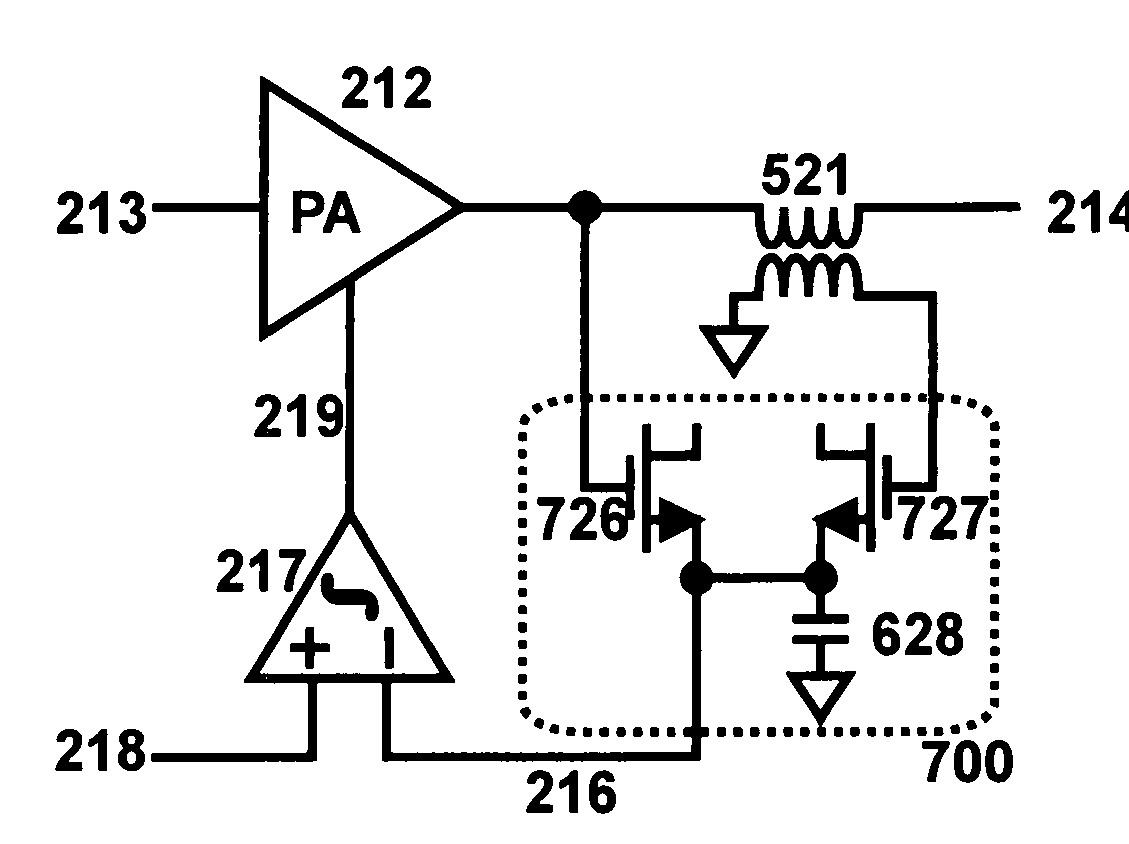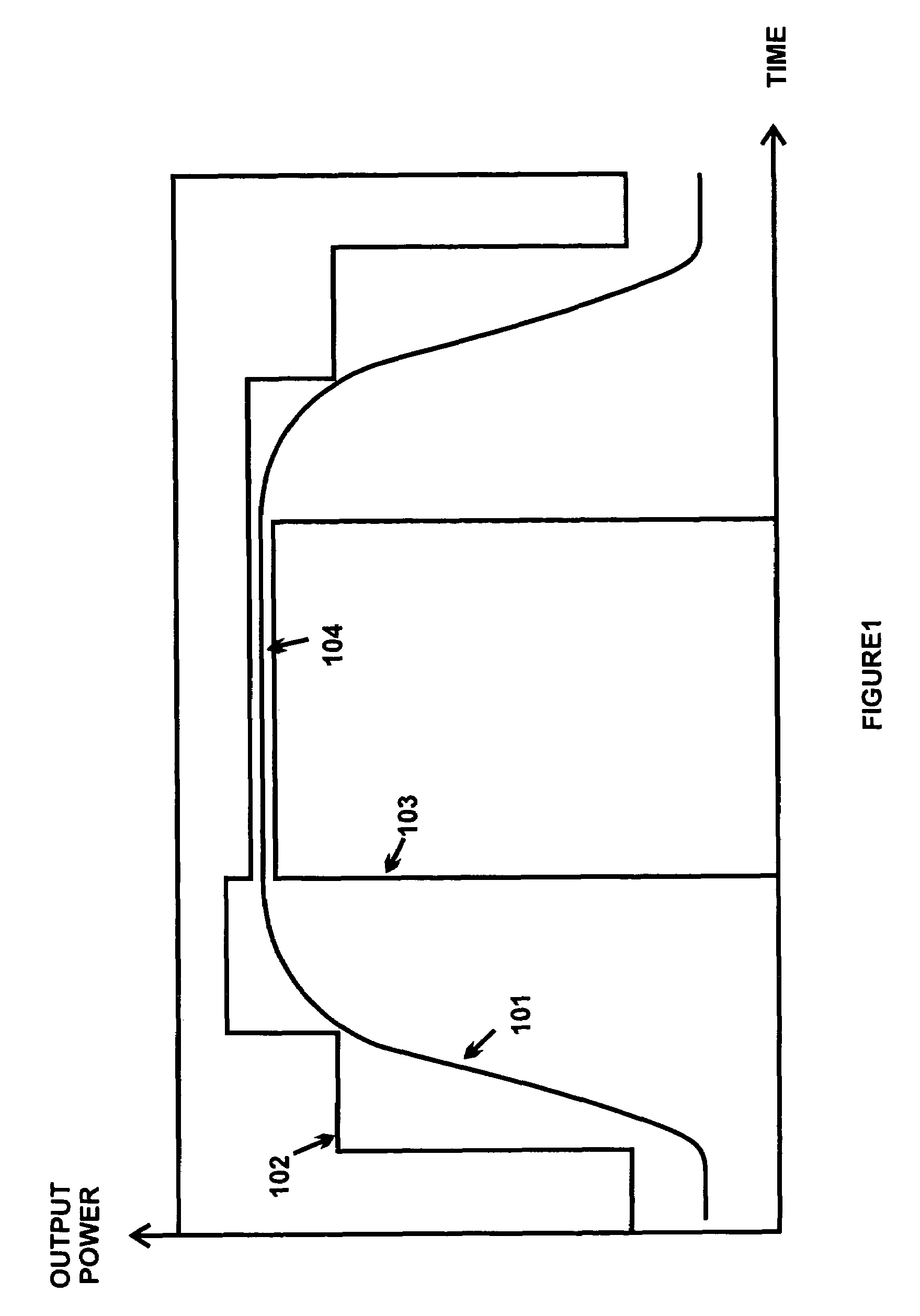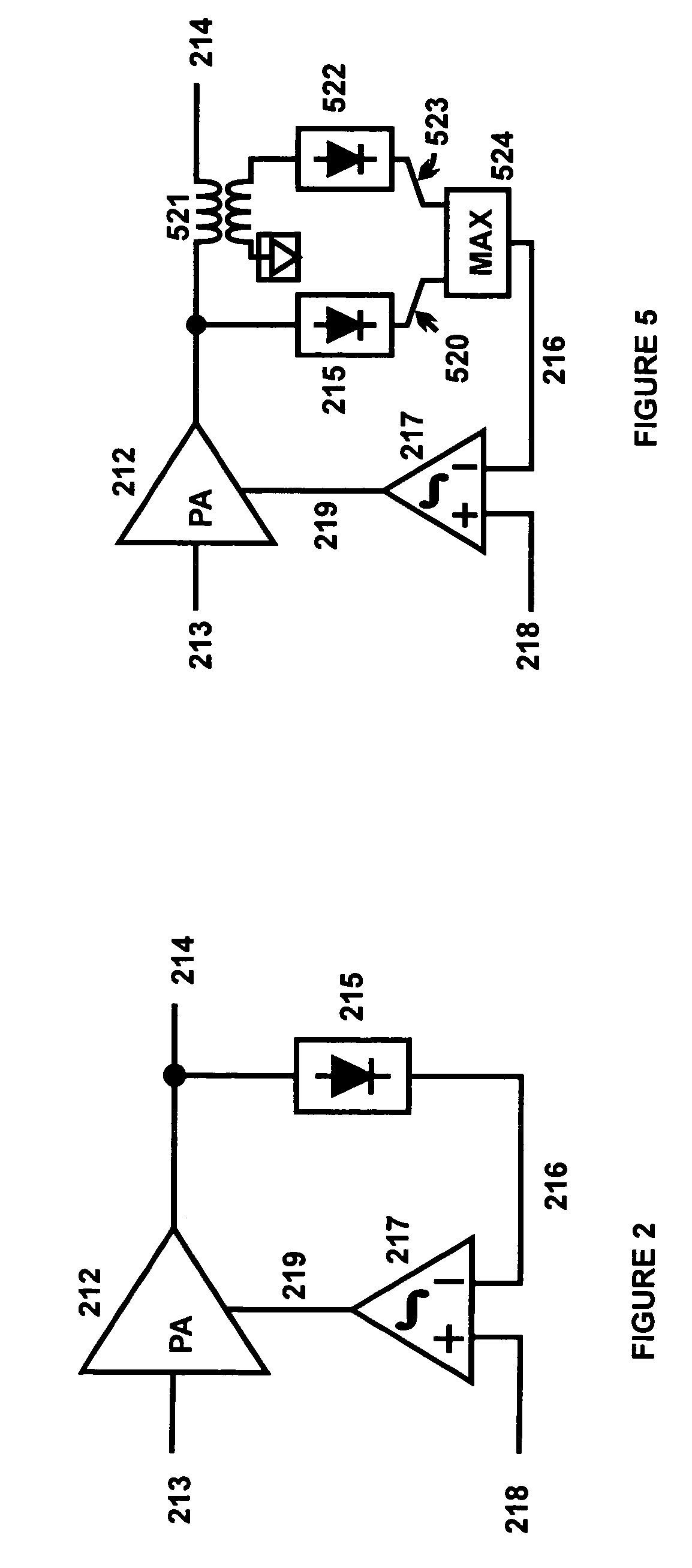System and method for power amplifier output power control
a power amplifier and output power technology, applied in gain control, high-frequency amplifiers, instruments, etc., can solve problems such as disadvantageous clipping of output power, failure of output frequency spectrum, and reduced power added efficiency
- Summary
- Abstract
- Description
- Claims
- Application Information
AI Technical Summary
Benefits of technology
Problems solved by technology
Method used
Image
Examples
Embodiment Construction
[0030]In the description which follows, like parts are marked throughout the specification and drawing with the same reference numerals, respectively. The drawing figures may not be to scale and certain components may be shown in generalized or schematic form and identified by commercial designations in the interest of clarity and conciseness.
[0031]FIG. 5 is a diagram of power amplifier 212 and power control system 500 in accordance with an exemplary embodiment of the present invention. Power amplifier 212 and power control system 500 can be implemented in silicon, silicon germanium, gallium arsenide, or other suitable materials. Likewise, power amplifier 212 and power control system 500 can be implemented on a single integrated circuit, from discrete components, from a combination of integrated circuits and discrete components, or in other suitable manners.
[0032]Power amplifier 212 and power control system 500 can generate a signal 520 that is proportional to the rf voltage envelop...
PUM
 Login to View More
Login to View More Abstract
Description
Claims
Application Information
 Login to View More
Login to View More - R&D
- Intellectual Property
- Life Sciences
- Materials
- Tech Scout
- Unparalleled Data Quality
- Higher Quality Content
- 60% Fewer Hallucinations
Browse by: Latest US Patents, China's latest patents, Technical Efficacy Thesaurus, Application Domain, Technology Topic, Popular Technical Reports.
© 2025 PatSnap. All rights reserved.Legal|Privacy policy|Modern Slavery Act Transparency Statement|Sitemap|About US| Contact US: help@patsnap.com



